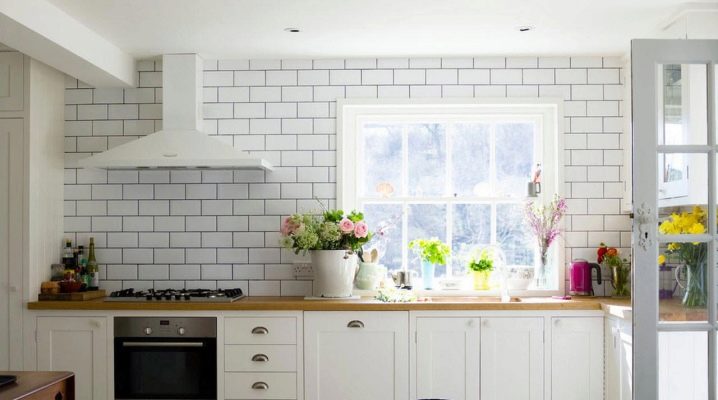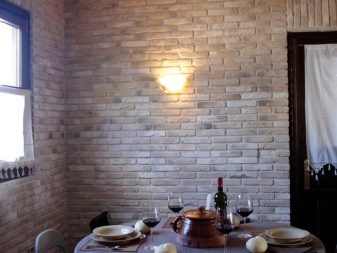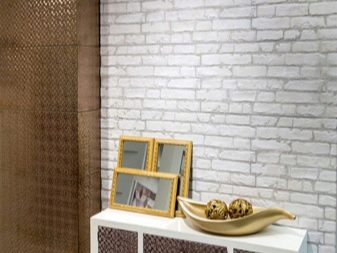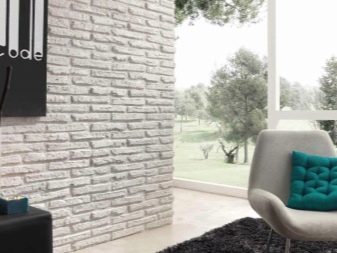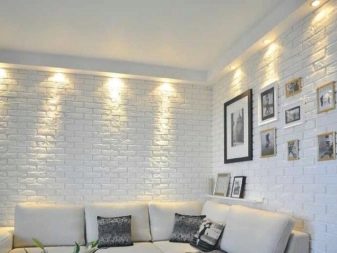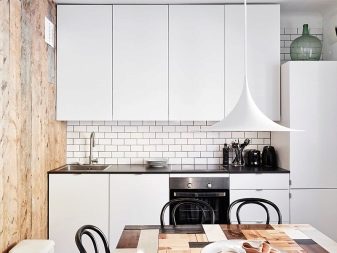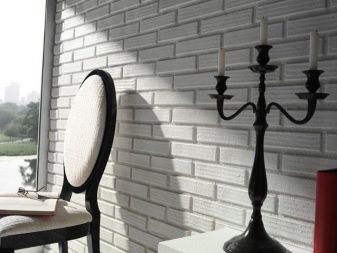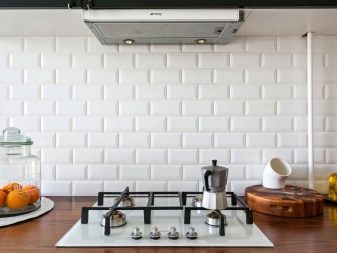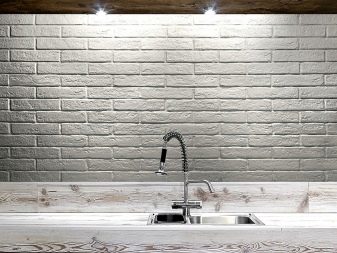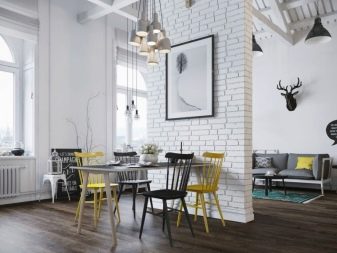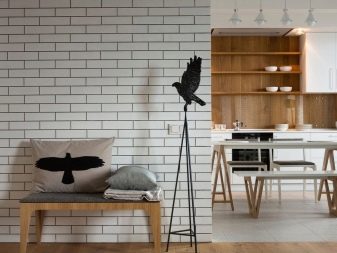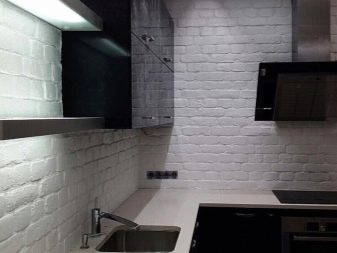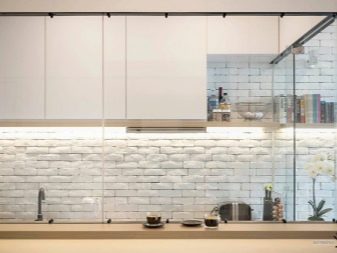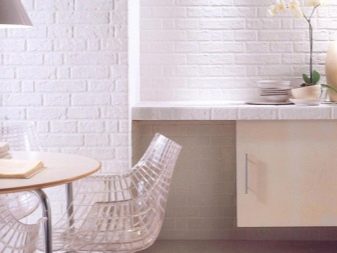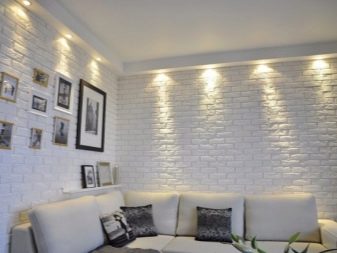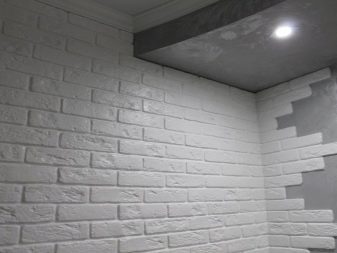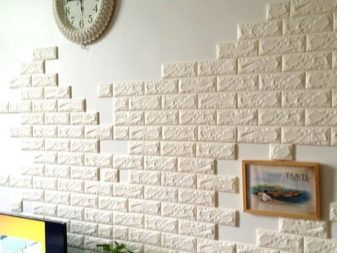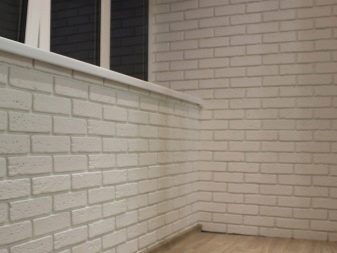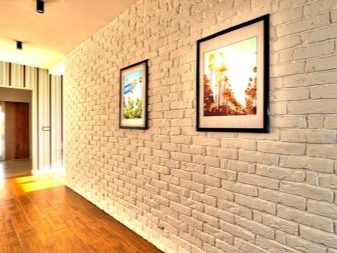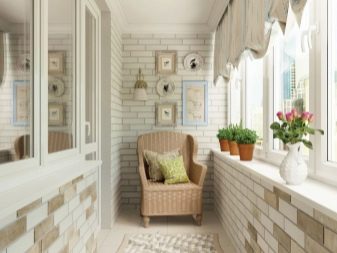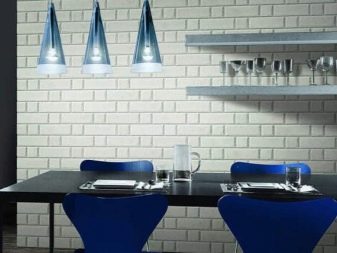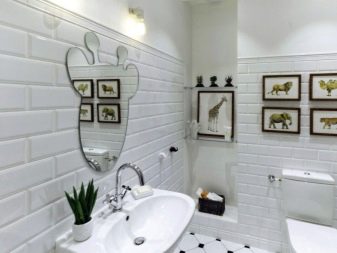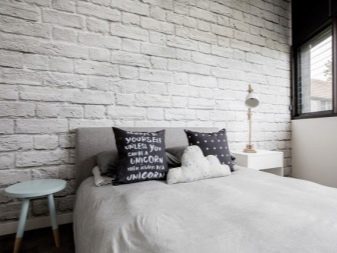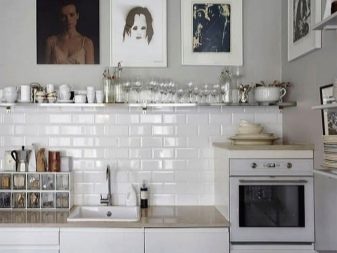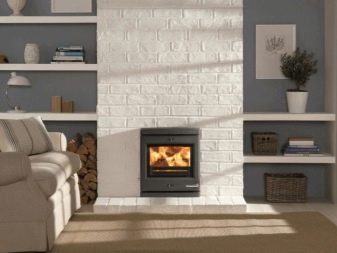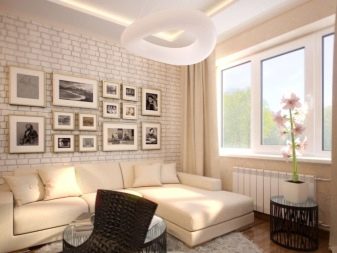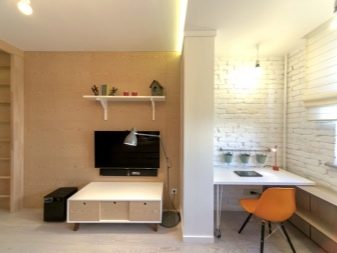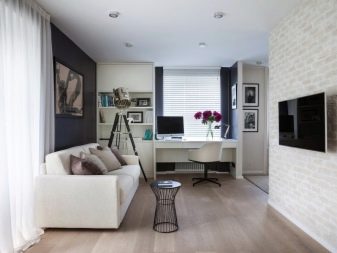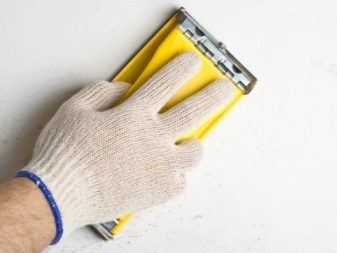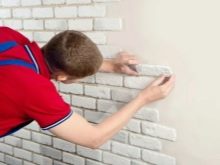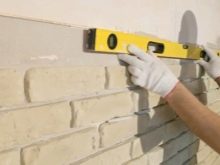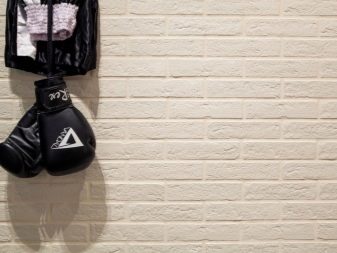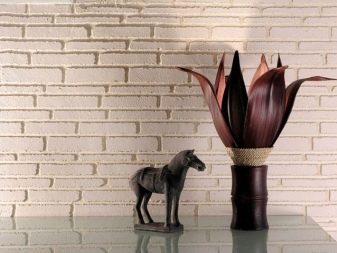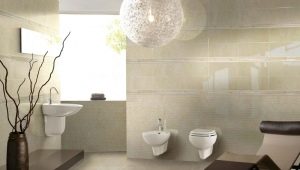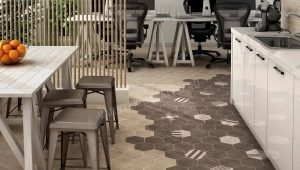White brick tile in interior design
Facing tiles, stylized brick, is often used for interior decoration of hallways and kitchens. A more courageous solution is to use this material for the decoration of living rooms and the decoration of bedrooms. Due to this material it is possible to create a stylish interior in a short time.
Tile bricks at a relatively low cost looks very solid.
The most commonly used tile brick with a traditional color - red or white, but there is also a tile with other shades. This type of cladding material is of little use in small premises.Since the visual perception of space is somewhat narrowed, respectively, the brick should be used with some caution. However, with proper use of ceramic tiles that mimic a brick, you can get a peculiar effect.
Brick is one of the most used materials for finishing, such popularity is explained both by the wear resistance, mechanical strength and other operational parameters of this material, as well as by the richness of its range of colors and textured solutions.
Reasonable price allows to use a brick not only as a building and exterior facing material, but also for interior decoration.
The large weight of natural brick is its only drawback, therefore, it is lined with walls must have sufficient strength and ability to withstand such a serious load.
The brick can be used, in addition to finishing the walls, also for the floor. In order to reduce the mechanical load, it is possible to use wall tiles that are stylized as bricks.. The appearance and decorative properties of such ceramics are practically indistinguishable from its natural counterpart, but it is much thinner, less in weight and has a more reasonable price.
Types of tiles "brick"
As a veneer, such a coating is produced in several shades.White tile is often used to decorate rooms in the classic version, but it can also be used for high-tech, modern or loft design. Country style and Provence can serve as other variants of the style decision for finishing the wall interior.
Facing white brick tiles can be organically combined with other types of finishing building materials such as wallpaper, stone, lining, and with various types of plaster.
In addition, white brick brick is a popular material used in the creation of landscape design.
The tile, which is an imitation of classic brick, the main color of which is a red-brown color, also has several shades. They depend on the variety of clay used to make it. The surface, lined with such material, looks volumetric and stylish, and also makes it possible to focus on a specific area of the room. Thanks to the warm shades of red tiles, comfort and warmth are added to the interior design.. For kitchens and hallways, this is a particularly popular type of finishing material.
Similar to old brickwork, the tile has a loose surface structure and is distinguished by a variety of textures. This decorative ceramics is used as a finishing material for fireplaces and wall coverings around them.
Glossy brick tiles for kitchens is a relatively new finishing material, just starting to manifest itself in this market segment. The shiny surface of this tile creates a lot of unusual and stylish curious effects in interior design.
Clinker ceramics differs in such level of reliability that it is applied not only on internal finishing works, but also as a facing material for facades. It is made of baked clay, with accuracy of reproducing the appearance of masonry from natural brick.
This coating is very resistant to moisture, mold and mechanical damage. Due to its high performance, clinker is an ideal material for finishing halls and kitchenswhere most often occur various kinds of incidents. Walls with such a coating can easily withstand accidental impacts from metal parts of large-sized objects, and traces of pets' claws will not remain on the surface.
Flexible tile, stylized as a brick, very reminiscent of wallpaper and glued on a similar technology. With a similar kind of tile, the surfaces of a complex profile are designed to create a brickwork effect; it is difficult to expose some surfaces with other, not so plastic materials. Flexible tiles finish the surface of the arches semicircular, columns, corners and the like.
In the installation of such a material is very simple, it uses the usual building glue.
Such a tile with a pleasant to the touch surface is one of the good sound and heat insulators. Ecological purity of such material makes it completely safe for human health. This material is made not only in the form of imitation under the brickwork, but can also recreate the beauty of natural stone.
Solid flexible panels are large in comparison with clinker ceramics, that is, they are able to imitate a whole area of the area of a brick wall. They are made of ceramic materials or polymer cement. Externally, this type of finish, although it is an imitation of brick, looks less natural due to the large number of repetitive elements.
Special features
In addition to low weight, which favorably distinguishes tiles from natural bricks, decorative lining attracts attention with resistance to aggressive chemical compounds, small damages, temperature drops and other external negative influences.
Such a coating has a long service life and is distinguished by a variety of textures and tones; this makes it possible to use it for facing walls with a variety of style solutions.
Tile facing under the brick is easily processed, it is easy to install, and this does not require the creation of any reinforcement or frames, it is unpretentious in the care. Such a coating is easily cut, which allows revealing them with geometrically complex surfaces such as joints and wall corners.
Stylized brickwork decorative ceramics is also a heat insulator, creating the conditions for additional insulation. It is laid on adhesive composites, the consumption of which is significantly lower than that required for laying ordinary bricks.
In appearance, the tile is practically no different from the laying of natural brick, but at the same time wins significantly in price.
Purpose
Most often, brick tiles are used for edging door and window openings, decorative mirrors and niches of various sizes and shapes. Finishing kitchen aprons is no less popular option for using such a coating.
Flexible, clinker and other types of facing materials that mimic a brick wall are used to finish fireplaces in country houses.
If the walls of a room are laid on tiled ceramics of various colors and textures, then it will be conditionally divided into zones with the release of a specific element of the interior.
At the same time, imitation of brickwork in one corner of the room will look stylish, this is an ideal option for a small room if you have a great desire to use a brick to finish it.
The tile is organically combined with wallpaper and plaster. When performing interior decorating should take into account that brick is not the material that should be cladded all the wallsotherwise the room will look like a warehouse or basement.In addition, a large amount of brick red-brown color will give it a very gloomy look.
Installation
The technology of laying decorative tiles with imitation of brickwork provides for the preparation of the surface for laying this material. For this purpose, the walls are sanded, greasy stains or old paint are removed, and their surface is treated with an acrylic primer, after which the wall area is covered with an adhesive.
Laying tiles start at the bottom: the first panel is superimposed on the wall with the solution applied on it and pressed against it. Then wedges are placed under the panel and the level of its horizontal and vertical position is checked by level. If there are discrepancies, they are eliminated by tapping with a rubber hammer on the panel. After the first row is laid, the second row is assembled; it is mounted with an offset to give credibility to the brickwork.
If the installation was done with a loosening, then a few days after the completion of the installation, you should grind the surfaces.
Price
Different types of lining under the brickwork cost in a different price, which depends on the type of material, its performance, weight, installation technology.So, the tile, which is an imitation of the old masonry, will have a higher cost than its simple and smooth variety.
How to make a white tile under the brick with your own hands, see the next video.
